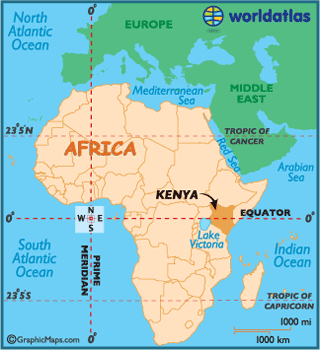After I spent a day at school I learned a lot about Kenya's history. It all started a very long time ago, records of humans living
in Kenya date back over 2 million years ago. During the Bantu Migrations
(1000-1800 AD), people migrated to what is present day Kenya, along with other
countries. By around the 8th century, Kenya was trading with Arabic, Indian,
Persian, and Chinese merchants on the Kenyan coast. They traded skins, ivory,
gold and spices. By the 19th century, the United Kingdom was influencing Kenyan
culture. Before 1870 Kenya was independent of European control; it was
through councils of elders. However, in 1884 a trading concession
was allowed to the British East Africa Company. The British
East Africa Company spread Christianity throughout East Africa. By 1890,
the British governed Kenya. The Mau Mau uprising (1952-1959) began
primarily because native Africans wanted access to the Kenya highlands, which
were mostly occupied by white settlers
After the Mau Mau uprising, Kenya was declared itself an independent republic.





















